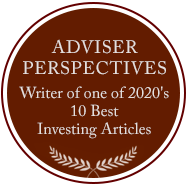AUSTRALIA: THE CONTINUED PROMISE DOWN UNDER
April 2011, Institutional Investor
A massive cyclone, extraordinary flooding, huge forest fires, and a decade-long draught have turned parts down under into disaster zones. But the Australian economy has barely flinched, having sidestepped recession when virtually every other developed market succumbed to the financial crisis. It grew 1.2% in 2009 when many economies contracted. It pushed ahead by another 3% in 2010, and is expected to do even better this year, according to the International Monetary Fund.
Equity investors have benefitted. Five-year annualized returns through January 27 were 5.45% in US dollar terms, according to MSCI. That was the second best performance among significant developed markets. And over ten years, no other market did better, with Aussie shares having averaged annual gains of 10.36%.
These returns have been greatly helped by healthy dividend payouts. At the end of January, the average yield of common shares was 3.8% according to data tracker FTSE. Only depressed Spanish stocks yielded more in the developed market
Despite 18 straight years of economic growth, government balance sheets the envy of the developed world, and home of half the world’s AA-rated banks, Australia barely registers in market-cap weighted portfolios. The reason: the country’s equities compose only 4% of the MSCI World Index. But no other country makes the case better for an alternative approach to country exposure.
What unnerves some investors, however, is that a large chunk of the market is geared to commodities. Tim Murphy, co-head of fund research at Morningstar Australia, says that 25% of the large-cap ASX 200 index are commodities and half of that figure is global industry leader BHP Biliton. He figures the economy is levered to an even higher degree to raw materials. “A retrenchment in prices could drag heavily on Australian shares,” Murphy surmises. “However, if we’re in the early stages of a global recovery, odds are commodities are far more likely to rise than to fall significantly over the medium term.”
Financials make up an even bigger chunk of the market—40%. Mark Daniels, portfolio manager of the A$ 193 million Aberdeen Australian Equities Fund, finds the local banks are less volatile than commodities and are stable portfolio ballast. Yielding an average of 6%, banks are likely to deliver total returns in the low double digits, surmises Daniels, so long as the economy is growing.
He likes Westpac Banking Corp., Commonwealth Bank of Australia, and Australia & New Zealand Banking Group, with the latter leading the way into Asia, with the bank looking to generate 20% of its profits from the region by the end of next year.
While strong Asian growth has been propelling Australia, it could slow—the second major risk to Australia. And with sales to China now accounting for nearly 20% of all exports—making the mainland Australia’s largest buyer—economists fear that the country will get smacked if Chinese growth significantly slows.
A third concern is rising interest rates. At 4.75%, central bank overnight rates are the highest in the developed world, having been bumped up 7 times since October 2009 to restrain inflation. But the Reserve Bank of Australia—the country’s central bank–has traditionally maintained high interest rates. And Scott Hixon, a portfolio manager of Invesco’s $7 billion Global Asset Allocation Team, thinks the long end of the curve may move another 100 basis points higher by the end of the year. He’s currently short 10-year Australian Sovereign Futures.
Higher rates could slow growth. But these yields are good news as far as interest-rate starved US, European, and Japanese investors are concerned.
Currently, the country’s yield curve is relatively flat, with only 80 basis points separating 1- and 15-year sovereigns,1 according to Bloomberg. This means investors can stay short term, protecting themselves from depreciation from any further increase in rates, to capture most of the country’s yield advantage. So where US investors have to go out 30 years to collect 4.5% with Treasuries, Australian investors can collect more than 5% by buying three-year sovereigns. And moving into state bonds and high-grade corporates pay another 30-100 bps.
Normally, such yield differential would suggest significant currency risk—another concern of foreign investors. But with superior current account balances, healthy government budgets and debt levels, and a far sounder banking system, the Aussie dollar would appear to be a far safer play than the greenback, euro, or yen. Invesco’s Hixon, believes that while there may be bumps over the near term, further on he believes rising interest rates and commodity prices will drive up the Australian dollar, which he has been long since the middle of last year.
While investing in Australia comes with risks, they are the kind that most developed nations would be glad to exchange for those they are facing these days. And with the country’s central bank predicting a 33% jump in corporate earnings over the next two years, it wouldn’t appear that the party is by any means over Down Under.



 GIR's Investing in the New Europe
GIR's Investing in the New Europe



